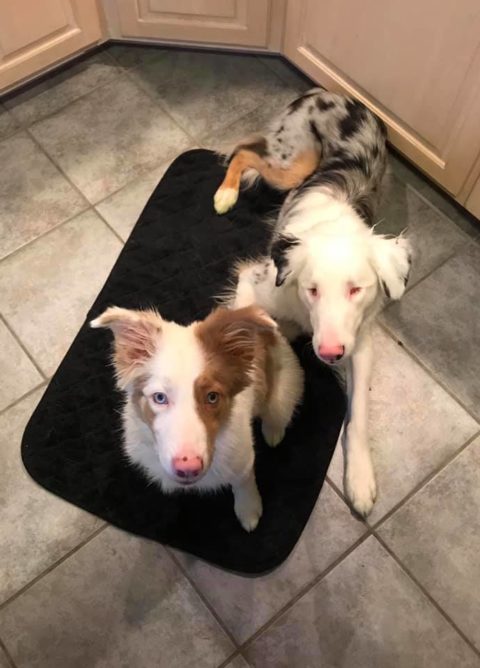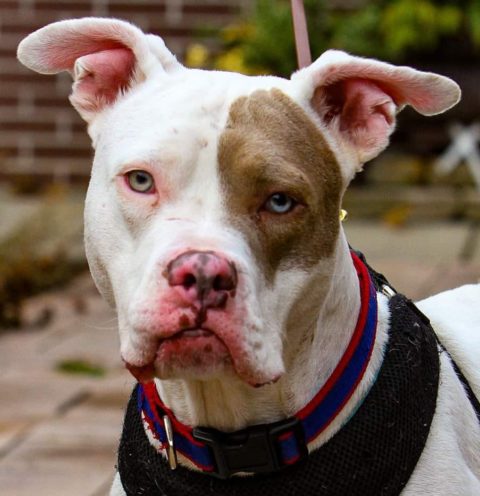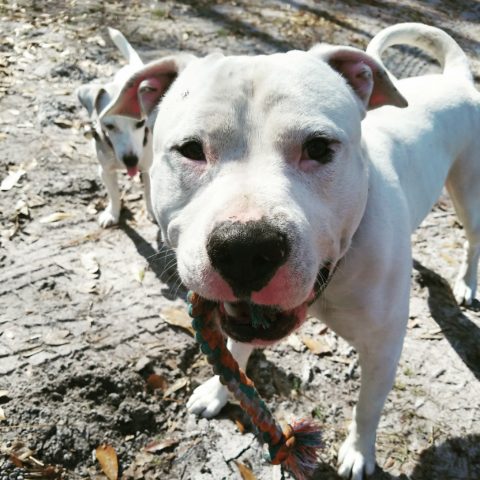What is Separation Anxiety in Dogs?
What is separation anxiety in dogs?
Separation anxiety in dogs is a really difficult behavior problem for both the animal and their caregivers. Separation Anxiety often leaves people feeling isolated and alone. When it comes to dog separation anxiety it is not the doggie being insolent or vengeful or angry or bored; rather, separation anxiety is a panic disorder.
The dog is actually, for lack of a technical term, “freaked out” when being left home alone or not having access to a person or people. Unfortunately, this dog behavior disorder is really difficult, not only from the point of view that we’re watching the dog genuinely suffer from the behaviors that they end up displaying as a result of separation anxiety, but also having the people feeling so disconnected with struggling with this issue.
The pet guardians feel isolated, and frequently they feel like they can’t leave the house for fear of what will happen. Also, they feel like maybe nobody quite understands because oftentimes there’s a lot of anecdotal information around separation anxiety, which is an attempt to be helpful but often isn’t something that’s going to help them to arrive at a resolution. To be certain, separation anxiety is a challenging behavior to work with.
What is separation anxiety in dogs defined?
Specifically, separation anxiety in dogs is a panic disorder. It is when a dog feels stressed, anxious, and fearful about being left home alone and or being left without access to a person or people. True separation anxiety is actually more rare, which is a good thing. Oftentimes what it is that we’re talking about and witnessing in dogs is isolation distress.
Under the significant umbrella term of “separation anxiety” in dogs, isolation distress is when a dog feels comfortable as long as there’s a human body present. With true separation anxiety, we’re talking about a situation where a dog is only comfortable if there’s one specific person present.
How do most caregivers find out that their dog has separation anxiety?
Oftentimes, caregivers might find out that their dog is suffering from separation anxiety by way of puzzling things out. Frequently, there may be complaints from neighbors about noise, about vocalizations, and continuous barking. Also, they might have gone to the vet because their dog would have broken out of a crate or done some other type of self-injurious behavior.
Alternatively, the pet parents might go to the vet because their dog has ingested something due to destructive behavior in their absence. It’s not uncommon for an anxious dog that has been left alone to perhaps chew a piece of a wall.
So it’s a collection of behaviors that lead us to look at what separation anxiety in dogs truly is, which again, it is a panic disorder. In terms of how to find out, a veterinarian (or vet behaviorist) is the one who actually can make the diagnosis about if the dog is specifically suffering from separation anxiety.
Why is separation anxiety in dogs such a difficult behavior to treat effectively?
Separation Anxiety in any dog is so difficult because people are often feeling immensely isolated. Frequently any type of trip out of the house corresponds with some sense of guilt at leaving the dog at home feeling so anxious, as expressed by their body language and oftentimes barking or other types of vocalization. It can feel frustrating because perhaps they have tried to put their dog in a crate, to crate train, without effect—other than the dog breaking out of the crate.
Oftentimes we frequently find confinement issues exist co-morbidly with separation anxiety. As such, we may have a dog that is not only suffering from a panic attack at being left home alone, but now they’re in an enclosed space, and we haven’t addressed the underlying issue, which is the excessive anxiety.
Unfortunately, when a dog suffers from separation anxiety, it can feel isolating and make people feel alone. Friends and family, while providing good intentional advice, it may not be good advice that helps them arrive at a solution and a situation where the dog is able to relax when alone.
Along with the sadness and frustration, the pet parents may be suffering financially from having to replace destroyed items in their home, they may be at risk of having to move out of their home if there have been noise complaints, or again, if there’s destruction happening in a rental situation.
For all of these reasons, separation anxiety in dogs is something that’s really, really trying for both the human and the animal involved. For these reasons, it’s also beneficial to work with someone who is a professional and who specializes in working with cases of dogs suffering from separation anxiety. Engaging a certified separation anxiety trainer will also provide the guardian someone in their corner who can cheerlead and help walk them step by step on working on protocols to help the dog to feel more comfortable when they’re by themselves.
Why is separation anxiety in dogs such a tough behavior to unravel or fix?
Separation anxiety in dogs is really difficult because oftentimes people may approach either a dog trainer or veterinarian with complaints about the behaviors that the pup is exhibiting. For example, barking or howling nonstop for hours on end or they may be complaining about the destruction that’s happening or elimination– urination and defecation inside of the house.
And it may be only after further investigation that we realize these things are happening only when the dog is home alone or without access to a person. Therefore, sometimes puzzling out the fact that all of these behaviors, the collection of behaviors that we’re talking about, these unwanted behaviors are actually pointing back to the underlying issues that we need to address which is the separation anxiety, the anxiety of being home alone, or again, unable to access a person.
Are there different levels to separation anxiety, such as, moderate or severe?
We can categorize separation anxiety in dogs in terms of mild, moderate, and severe. However, the categorization only helps in terms of thinking about what people are able to recognize.
For example, most trainers can quickly identify a case of more moderate to severe separation anxiety, based on the level and frequency of destruction that we’re seeing when the dog is home alone. Whereas, if we’ve got a case of more mild or moderate separation anxiety, oftentimes, we first need to rule out other potential causes.
For example, if we have a younger dog or even a dog that’s not that young, we want to make sure that we’re not talking about boredom. Moreover, we want to make sure again, in the case of a younger dog or a puppy, that we’re not talking about puppy behaviors, i.e., is the dog chewing because they’re teething, or are they chewing because of anxiety?
Of course, our first step is to rule out any potential medical reason for the underlying cause. Again, if the dog is chewing something, we want to make sure that there’s not an irritant in their mouth. We want to make sure that it’s not a medical reason for the behavior with regard to mild or moderate separation anxiety. Also, if there’s barking going on, we would want to rule out if the dog is barking for attention, again, for some medical reason, versus the underlying cause has been anxiety.
If the dog is going to the bathroom in the house, we would want to rule out whether house training is an issue. So if house training is in place, and the dog doesn’t have accidents outside of the alone time, then we again would want to explore a little bit more and make sure that the reason for the behavior is due to anxiety versus a lack of training.
In your professional capacity as a certified separation anxiety trainer, what is the worst case of separation anxiety that you have come across?
Often I think people consider a worst-case scenario in terms of visually what we can observe, a.k.a., some severe destruction. There are the dogs who have literally eaten through a crate and escaped oftentimes injuring either their paws or teeth in doing so. I had a client whose dog had such severe separation anxiety that he ate the doorframe, and therefore, the dog was able to escape from the home.
Again, this was solely as a result of the anxiety associated with separation disorder.
On the other hand, I’ve encountered clients who may not have demonstrated that outward same level of, for example, destruction, but they’ve been suffering from their dog having this type of anxiety for many, many years. And I would consider that continued repetition of the unwanted behavior as a result of the chronic stress associated to be a really difficult case as well.
Separation Anxiety in Dogs Series Episode 1 – What is Separation Anxiety?
Get relief from the desolation of your dog’s separation anxiety.
 Have you been thwarted by previous training attempts? You need a highly-trained specialist—an expert who devotes her days to resolving dog desolation distress.
Have you been thwarted by previous training attempts? You need a highly-trained specialist—an expert who devotes her days to resolving dog desolation distress.
I offer a distinctively successful approach to separation anxiety issues with daily guidance and extensive encouragement. If you and your dog are suffering from your dog’s separation anxiety, sign up for my Separation Anxiety Program. I’ll help dissolve your despair.





